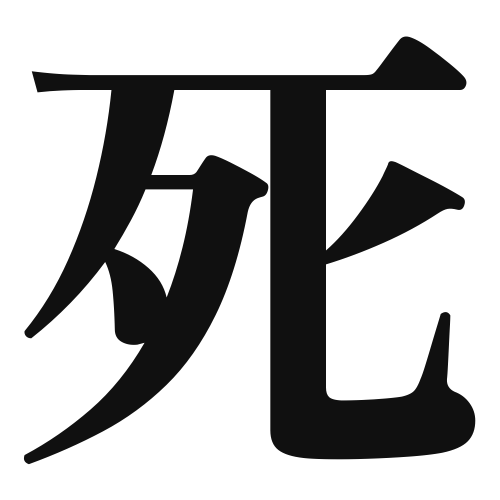1. Overview of Meaning
The kanji “死” (shi) means “death.” It represents the end of life and is often associated with various cultural and philosophical concepts regarding mortality.
2. Formation and Radicals
The kanji “死” is a phono-semantic compound, which means it combines both phonetic and semantic elements. The character is composed of the radical 死 itself, which conveys the meaning of death.
3. Examples of Usage
Common words and phrases that include “死” are:
- 死亡 (shibou) – death
- 死体 (shitai) – corpse
- 死ぬ (shinu) – to die
Example sentences in daily conversation:
- 彼は病気で死んだ。(Kare wa byouki de shinda.) – He died of illness.
- 私たちは死について考えることが大切です。(Watashitachi wa shi ni tsuite kangaeru koto ga taisetsu desu.) – It is important for us to think about death.
4. Synonyms and Antonyms
Similar kanji with related meanings include:
- 亡 (bou) – to perish, often used in a more gentle context.
Antonyms include:
- 生 (sei) – life, representing the opposite of death.
5. Cultural and Historical Background
The concept of “死” is deeply rooted in Japanese culture, where it is often associated with various rituals and beliefs about the afterlife. For example, the Japanese celebrate Obon, a festival honoring deceased ancestors.
Proverbs and idiomatic expressions related to death include:
- 死ぬほど働く (shinu hodo hataraku) – to work oneself to death, indicating extreme dedication or overwork.
